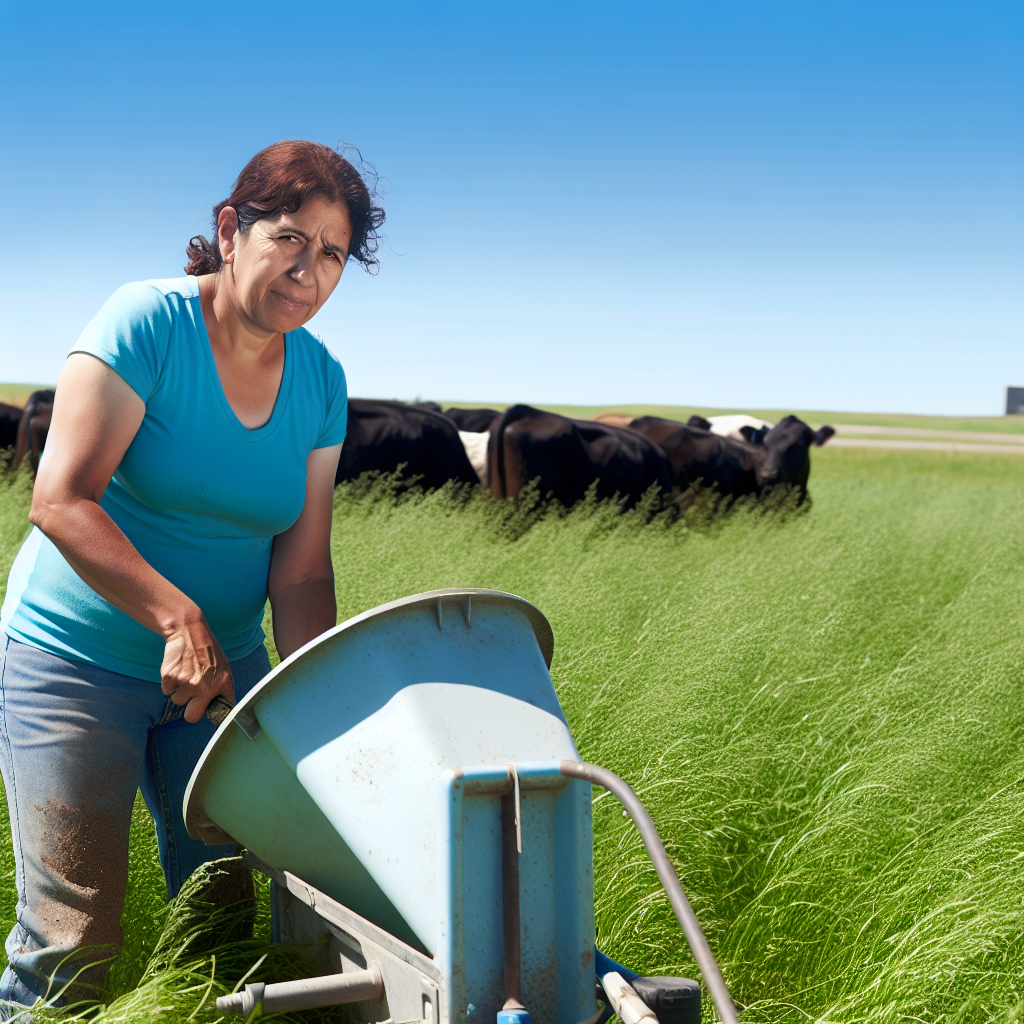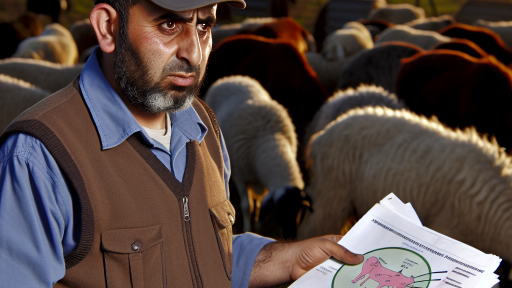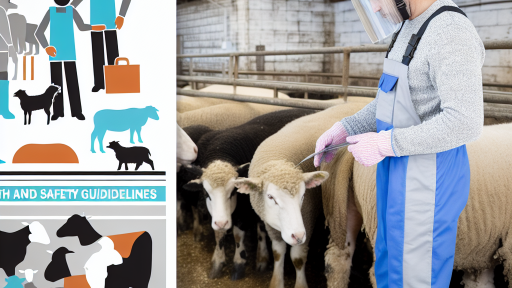Introduction to Cost-Effective Beef Cattle Feeding
Feeding beef cattle efficiently can significantly reduce costs.
Farmers face constant pressure to optimize their operations.
Cost-effective feeding strategies greatly influence profitability.
Understanding the nutritional needs of cattle is essential.
Importance of Nutritional Balance
Nutritional balance ensures cattle grow healthily and efficiently.
Different stages of cattle growth require varying nutrients.
Protein, energy, vitamins, and minerals are crucial components.
It is vital to adapt feeding programs to these needs.
Utilizing Local Resources
Local resources can provide economical feeding solutions.
Many farmers can source feed ingredients nearby.
This practice reduces transport costs and supports local economies.
Incorporating by-products and forages can enhance feeding efficiency.
Implementing Strategic Feeding Practices
Strategic feeding practices are essential for cost management.
Record-keeping helps track feed efficiency and intake.
Adjusting rations based on seasonal availability can save money.
Transform Your Agribusiness
Unlock your farm's potential with expert advice tailored to your needs. Get actionable steps that drive real results.
Get StartedFor instance, using silage during winter months minimizes feed costs.
Monitoring and Adjusting Feed Plans
Regular monitoring allows farmers to fine-tune feed plans.
Feedback from cattle performance can indicate necessary changes.
Staying informed on market prices ensures timely adjustments.
This proactive approach helps mitigate potential losses.
Collaborating with Experts
Consulting with livestock nutritionists can enhance feeding strategies.
Experts can offer tailored advice based on specific herd needs.
Collaboration can also reveal innovative feeding techniques.
For example, Dr. Emily Harris developed an efficient feeding program.
Emphasizing Sustainable Practices
Sustainable practices lead to cost savings and environmental benefits.
Implementing rotational grazing enhances pasture quality.
This method reduces feed reliance while improving soil health.
Therefore, adopting sustainable practices is a win-win scenario.
Understanding Nutritional Requirements for Beef Cattle
Importance of Nutrition in Beef Production
Nutrition plays a crucial role in beef cattle production.
Proper feeding enhances growth rates and overall health.
Additionally, well-fed cattle produce higher quality meat.
Basic Nutritional Components
Beef cattle need six essential nutrients for optimal growth.
- Water is vital for all physiological functions.
- Carbohydrates provide energy for daily activities.
- Proteins are necessary for muscle development.
- Fats serve as a concentrated source of energy.
- Vitamins support various metabolic functions.
- Minerals contribute to bone health and metabolic regulation.
Energy Requirements
Energy needs depend on the cattle’s age, weight, and purpose.
Growing cattle require more energy than mature animals.
Similarly, pregnant and lactating cows have higher energy demands.
Protein Needs
Protein is essential for muscle development and tissue repair.
High-quality protein sources include soybean meal and alfalfa.
Monitoring protein intake ensures optimal growth rates.
Balancing Rations
Creating a balanced diet is crucial for cattle health.
Showcase Your Farming Business
Publish your professional farming services profile on our blog for a one-time fee of $200 and reach a dedicated audience of farmers and agribusiness owners.
Publish Your ProfileRations should meet energy, protein, vitamin, and mineral needs.
Regularly assess forage quality and supplement as necessary.
Factors Influencing Nutritional Requirements
Several factors can affect the nutritional needs of beef cattle.
- Age significantly impacts growth and development.
- Weight influences overall energy and nutrient requirements.
- Health status can modify feeding needs.
- Production goals dictate specific nutritional strategies.
Utilizing Forages Effectively
Forages form the base of beef cattle diets.
Understanding forage quality aids in nutrient allocation.
Utilizing legumes and grasses can enhance protein intake.
Considerations for Feeding Strategies
Developing cost-effective feeding strategies is essential.
Evaluate local feed resources and optimize usage.
Collaborating with nutritionists can improve feeding efficiency.
Evaluating Feed Sources: Costs vs. Nutritional Value
Understanding Feed Costs
Feed costs significantly impact overall cattle production expenses.
Farmers must analyze the market prices of various feed options.
Understanding price fluctuations helps in budgeting effectively.
Moreover, consider seasonal trends that affect feed availability.
Assessing Nutritional Value
Nutritional value is critical for optimizing cattle growth and health.
Quality feed promotes higher weight gains and better feed efficiency.
Moreover, it reduces the incidence of diseases among cattle.
Farmers should evaluate the protein, fat, and fiber levels in feed.
Choosing Between Feed Types
There are several types of cattle feed available in the market.
- High-quality grains provide solid energy sources.
- Forages offer fiber and essential nutrients.
- Supplements enhance diets and fill nutritional gaps.
Choosing the right combination is crucial for cost-effectiveness.
Evaluating Local Feed Sources
Local feed sources often offer fresher options at lower costs.
Farmers can also support local businesses by sourcing nearby.
Additionally, transport costs are minimized with local sources.
A community approach can lead to better pricing negotiations.
Implementing a Feeding Strategy
Developing a feeding strategy involves careful planning.
Calculate the average daily feed intake for your cattle.
Consider the growth stage when formulating these rations.
Regularly review and adjust your feeding strategy as needed.
Monitoring Performance and Costs
Regularly assess livestock performance related to feed types.
Key performance indicators include weight gain and feed conversion rates.
By documenting these metrics, farmers identify successful practices.
Adjustments can lead to improved profitability over time.
Delve into the Subject: Integrating Aquaculture with Traditional Livestock Farming
Utilizing Forage-Based Feeding Strategies
Importance of Forage in Cattle Diets
Forage serves as a primary source of nutrition for beef cattle.
It is more economical compared to grain-based feeds.
Forages improve digestion and rumen health in cattle.
Additionally, they contribute to better weight gain and overall health.
Types of Forage Available
Different types of forage can cater to specific needs.
Pasture grasses provide essential nutrients for grazing cattle.
Hay is another valuable resource, particularly in winter months.
Silage can be used as a supplemental feed option.
Showcase Your Farming Business
Publish your professional farming services profile on our blog for a one-time fee of $200 and reach a dedicated audience of farmers and agribusiness owners.
Publish Your ProfileEach type of forage has unique benefits for cattle nutrition.
Maximizing Forage Utilization
Implement rotational grazing to optimize forage consumption.
This method prevents overgrazing and promotes pasture health.
Additionally, consider planting legumes alongside grasses.
Legumes enhance soil fertility and contribute to better nutrition.
Monitoring Forage Quality
Regularly test forage quality to ensure nutritional adequacy.
Analyze factors such as protein content and fiber levels.
This assessment helps in making informed feeding decisions.
By prioritizing quality, farmers can maintain healthy herds.
Cost-Effective Supplementation
Occasionally, cattle may require supplementation for balanced nutrition.
Use by-products from other agricultural processes as affordable options.
Examples include distillers grains and beet pulp.
These supplements can significantly reduce feeding costs.
Improving Soil Health
Sustainable forage systems focus on building soil health.
Healthy soil leads to better forage production.
Implement practices such as cover cropping to enhance soil structure.
Healthy pastures contribute to sustainable cattle production.
Forage-Based Feeding Strategies for Cattle
Forage-based feeding strategies are essential for cost-effective cattle raising.
Utilizing a variety of forages supports animal health and productivity.
Adopting these practices ensures long-term sustainability in beef production.
Find Out More: Harvesting Techniques to Maximize Yield in Fish Farms
The Role of By-Products in Beef Cattle Diets
Understanding By-Product Feeds
By-product feeds originate from the processing of food products.
They provide cost-effective alternatives for beef cattle diets.
Common by-products include distiller’s grains and citrus pulp.
These feeds often contain valuable nutrients essential for growth.
Additionally, they reduce waste in the food production system.
Benefits of Incorporating By-Products
Utilizing by-products can significantly lower feed costs.
They enhance the overall nutritional profile of cattle diets.
Moreover, local availability can minimize transportation expenses.
By-products also contribute to environmental sustainability.
This practice supports recycling and resource efficiency in agriculture.
Selecting Suitable By-Products
Not all by-products are suitable for beef cattle.
Considerations include nutrient composition and digestibility.
Collaborating with a nutritionist can optimize feed formulations.
Regularly assess feedstuffs for consistency and quality.
Maintain a balance of energy, protein, and fiber in the diet.
Examples of Common By-Products
- Distiller’s Grains: High in protein and energy.
- Corn Gluten Feed: A good source of protein and fiber.
- Soybean Hulls: Excellent for fiber and palatability.
- Citrus Pulp: Provides carbohydrates and enhances taste.
Each of these options offers unique benefits for beef cattle.
Challenges and Considerations
Relying too heavily on by-products may lead to nutritional imbalances.
Monitor cattle health closely when introducing new feeds.
Gradually acclimatize cattle to prevent digestive disturbances.
Showcase Your Farming Business
Publish your professional farming services profile on our blog for a one-time fee of $200 and reach a dedicated audience of farmers and agribusiness owners.
Publish Your ProfileAdditionally, consider market fluctuations and availability of by-products.
Future Directions in By-Product Feeding
Research continues to unveil new by-product feeds.
Innovative processing techniques enhance nutrient availability.
Furthermore, sustainable practices are becoming increasingly important.
Exploring alternative by-products can provide new feeding options.
Ultimately, well-informed strategies can improve herd performance.
Uncover the Details: Environmental Impacts of Fish Farming and Mitigation Tips
Implementing Pasture Management Techniques for Cost Savings
Understanding Pasture Health
Healthy pastures are essential for efficient cattle feeding.
They provide the necessary nutrients and forage quality.
Regular soil testing can help assess nutrient levels.
By understanding soil health, farmers can optimize their inputs.
Rotational Grazing
Rotational grazing maximizes pasture productivity.
This method allows for recovery periods for grass plants.
It minimizes overgrazing, promoting sustainable forage growth.
Farmers can rotate cattle among different grazing areas.
As a result, pasture resilience and health improve significantly.
Seed Selection and Improvement
Choosing the right grass species benefits pasture yield.
Species selection depends on climate, soil type, and cattle needs.
Improving pasture with legumes enriches soil nitrogen levels.
Legumes can also provide high-quality forage for livestock.
Pasture Fertility Management
Maintaining proper nutrient levels is crucial for pasture health.
Effective fertilization can enhance forage production significantly.
Timing and application methods affect nutrient availability.
Utilizing organic fertilizers can also improve soil structure.
Monitoring and Adjusting Grazing Pressure
Regular monitoring of pasture conditions is vital.
This helps farmers adjust grazing pressure accordingly.
Correct grazing pressure promotes optimal forage utilization.
It also aids in maintaining pasture vigor and productivity.
Utilizing Technology for Efficiency
Technology can enhance pasture management techniques.
Soil moisture sensors can indicate when to irrigate.
GPS systems can help in planning grazing rotations.
Data analytics can optimize feed costs and pasture productivity.
Delve into the Subject: Disease Prevention and Health Management in Fish Farms

Supplemental Feeding: When and How to Use It Wisely
Understanding Supplemental Feeding
Supplemental feeding provides additional nutrients to cattle.
This strategy is crucial during periods of low forage availability.
Understanding when to supplement is vital for herd health.
Identifying the Need for Supplemental Feeding
Pay attention to forage quality and quantity.
Monitor your cattle’s body condition regularly.
Signs of nutrient deficiency include weight loss and poor coat condition.
Additionally, evaluate pasture quality after winter and droughts.
Showcase Your Farming Business
Publish your professional farming services profile on our blog for a one-time fee of $200 and reach a dedicated audience of farmers and agribusiness owners.
Publish Your ProfileChoosing the Right Supplemental Feed
There are various options for supplemental feeds.
Grain-based feeds provide energy but should be used cautiously.
Protein supplements like soybean meal enhance growth and lactation.
Mineral and vitamin supplements ensure overall health.
Timing of Supplemental Feeding
Identify the critical periods for supplementing cattle.
Usually, late gestation and early lactation are essential times.
Summer and fall droughts can also necessitate supplementation.
Providing supplements before calving improves calf health.
Implementing a Feeding Program
Develop a planned feeding program based on herd needs.
Consider group sizes and age classifications for targeted feeding.
Monitor feed intake to avoid over or under-supplementation.
Regular assessment of cattle response can help adjust the program.
Cost-Effective Strategies for Supplemental Feeding
Look for local and seasonal feeds to reduce costs.
Cooperate with neighboring farmers to bulk purchase feeds.
Evaluate the nutrient content of various feed options.
Utilize by-products from local agriculture when possible.
Optimizing Cattle Health Through Strategic Feeding
Using supplemental feeding wisely can enhance cattle productivity.
Tailor your feeding strategy based on specific herd requirements.
This proactive approach ultimately supports long-term profitability.
Analyzing Animal Health and Its Impact on Feeding Costs
The Relationship Between Nutrition and Health
Proper nutrition directly influences the overall health of beef cattle.
Healthy animals exhibit better growth rates and produce more meat.
Suboptimal feeding can lead to health issues, increasing costs over time.
Additionally, maintaining excellent nutrition reduces veterinary expenses.
Identifying Common Health Issues
Common health problems in beef cattle include respiratory diseases and digestive disorders.
These conditions often stem from poor nutrition and inadequate feeding practices.
Identifying health issues early can mitigate financial losses.
Farmers should establish regular health monitoring protocols.
The Financial Impact of Poor Health
Poor animal health can significantly increase overall feeding costs.
When cattle are sick, they often eat less, slowing growth rates.
This reduction in intake demands additional feed adjustments, further raising costs.
Moreover, health issues can lead to higher mortality rates, affecting herd size.
Implementing Preventive Measures
Preventive health care is crucial for managing feeding costs.
Implementing vaccination programs can enhance herd immunity.
Furthermore, regular health checks help to maintain optimal nutrition levels.
Investing in quality feed and supplements supports overall animal health.
Linking Health and Feeding Strategies
Integrating feeding strategies with health management can improve results.
For example, identifying specific nutrient deficiencies can optimize diets.
Additionally, tailored feeding programs can enhance health outcomes.
These programs can minimize wastage and reduce costs over time.
The Role of Research and Technology
Emerging research plays a vital role in enhancing cattle health and nutrition.
Showcase Your Farming Business
Publish your professional farming services profile on our blog for a one-time fee of $200 and reach a dedicated audience of farmers and agribusiness owners.
Publish Your ProfileTechnological advancements provide farmers with valuable insights.
Data analytics can optimize feeding strategies, promoting better health.
Utilizing technology helps farmers make informed decisions, lowering expenses.
Innovative Technologies in Beef Cattle Feeding Management
Precision Feeding Systems
Precision feeding systems optimize feed efficiency for beef cattle.
These systems use real-time data to adjust feed rations quickly.
This technology reduces feed waste and lowers costs significantly.
Farmers can track nutrient intake through sophisticated software.
Moreover, automated feeding systems enhance labor efficiency.
Data Analytics and Monitoring
Data analytics play a crucial role in beef cattle management.
Farmers can analyze growth patterns and health indicators effectively.
This information helps in making informed feeding decisions.
Additionally, wearable technology monitors individual animal health.
These advancements lead to improved overall herd performance.
Alternative Feed Ingredients
Utilizing alternative feed ingredients can reduce costs.
By-products from the food industry offer nutritious options.
Ingredients like distillers grains are rich in protein.
Moreover, these alternatives can minimize reliance on traditional feeds.
Exploring local sources also supports community agriculture.
Blockchain in Supply Chain Management
Blockchain technology enhances traceability in beef supply chains.
This transparency improves consumer trust and food safety.
Farmers can track feed sources and animal health records efficiently.
Such systems help in verifying the origin of beef products.
Consequently, this fosters accountability throughout the supply chain.
Additional Resources
Conservation Innovation Grants Awards Fiscal Year 2023 | Natural …
Strategies to improve the efficiency of beef cattle production




